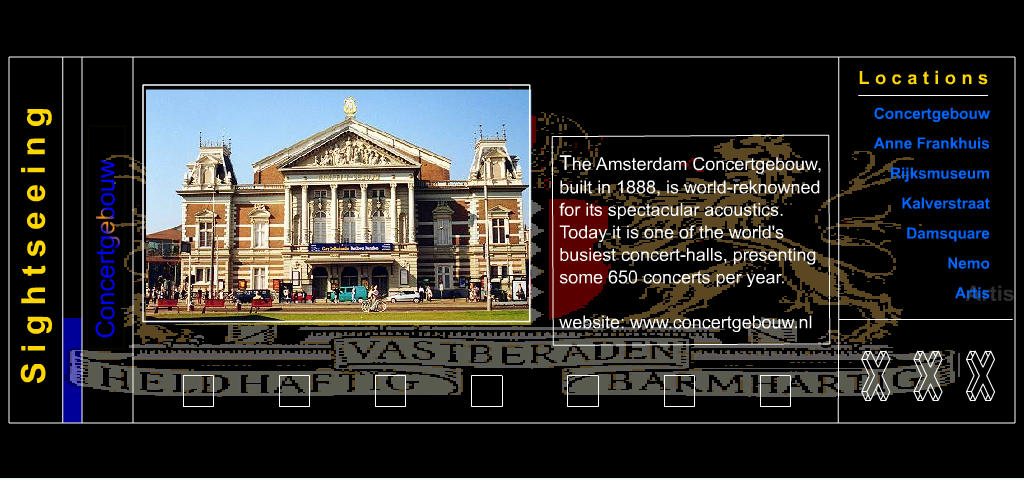[_]
demo(s) in 3D / Inl. Multimedia Roundup
focus on multimedia
multimedia @ VU / exposure / ...
The world of multimedia may be looked at in many ways. In fact, the phrase multimedia is too generic to be meaningful in any way. Nevertheless, multimedia has become a subject of interest for academia.
In the first year of the Multimedia and Culture curriculum we start with a general Introduction to Multimedia. This course centers around three themes: the convergence between media, platforms and delivery technology, the availability of broadband communication and its impact on the development of standards such as MPEG-4, and multimedia information retrieval as an essential ingredient of the growing multimedia information repository on the Web.
Apart from the theoretical part, students must make a multimedia presentation in either Macromedia Director or Flash, on the theme An annotated tour in Amsterdam. The tour may present cultural items as well more personal or political items, provided that these are somehow related to Amsterdam. Some examples are shown in the figures.

IMM 2001 -- Cultural Tour in Amsterdam
There are two follow-up courses, which are given in respectively the second and third year:
The first of these courses deals with the technology for creating 3D scenes and worlds, whereas the second is more focused on providing intelligent services in virtual environments.
The Web3D course is very practical. In this course students must learn the craft of creating dynamic 3D worlds. This not only involves the creation of 3D models, but also programming the dynamic behavior and interaction features of such worlds. The assignments are centered around a theme. The theme for 2001 was to create a product involving the Dutch graphic artist M.C.Escher. The example below shows an example of students'work, the Escher TV, that allows the user to browse through a sequence of Escher images.

MMA -- Escher TV
In the second course, we focus on what we may call intelligent multimedia. In this course, we study the integration of Web3D and agent technology. Students must define a project in the area of information retrieval, multi-user games, or persuasive applications.
[_]